when Euro NCAP They began crash testing passenger cars and disseminating information in 1997, and had two main motivations: “give consumers an informed choice when it comes to their safety and put pressure on car manufacturers to improve safety,” said the company’s director of strategic development. Matthew Avery explains Euro NCAP, before NCAP24 World Conference In Munich.
Meanwhile, nearly 1,000 vehicles have been tested and, having become an essential part of vehicle design, car manufacturers across the board are now seeking the five-star rating.
Considering the impact on road fatalities, Avery says: “By 2015, almost 20 years after the first assessments were provided, which is the time it would take to completely turn around the European fleet, we had seen a significant 65 per cent to 70 per cent reduction in passenger fatalities. In just five years, the introduction of autonomous emergency braking (AEB) systems, for example, has reduced front-to-rear collisions by 30 to 40 percent.
However, the ultimate goal remains more ambitious – Euro NCAP aims to help European countries achieve the “Vision Zero” goal and end traffic-related deaths completely.
In order to do this, it is important to address not only passenger cars, but also commercial vehicles. Heavy trucks weighing 7.5 tons and above make up only three percent of the European fleet but are involved in 15 percent of all fatal accidents.
Avery was very clear: “We won’t be able to deliver Vision Zero unless we address that 15 percent of crashes. It’s very important that we start looking at the safety of heavy goods vehicles.
Trucks cover a lot of miles and are therefore highly vulnerable on our roads, but there is another major factor that plays a role in the high percentage of deaths for which trucks are responsible. Many of the advanced safety technologies developed in recent years that are available in passenger cars have not yet been installed on heavy vehicles.
“Because, right now, this is a free-for-all for truck manufacturers beyond regulation. “What we have now is some manufacturers offering some of the technology, but by no means all of it,” Avery explains.
Recognizing these shortcomings, Ulrike Langberg of Swedish Road Transport Association He agrees: “The sooner we realize that safety technologies in trucks lag behind those in cars, the faster we can reduce the number of fatal accidents involving trucks.”
Truck safety assessment
Over the past 18 months, Euro NCAP has been working on a new truck safety classification scheme, which was presented at the NCAP24 global conference held in Munich on 23-24 April.
“Trucks are a completely different market than passenger cars, they represent a new audience — instead of talking to consumers, it’s very much a business-to-business conversation,” Avery says. “The new truck safety assessments will target the multi-stakeholder ecosystem, consisting of carriers, manufacturers, shippers, insurance companies and authorities.”
Avery explains that the rating procedure is intended to encourage vehicle manufacturers to accommodate innovative safety technologies, while also ensuring that the technology is accepted by drivers and truckers. “These are often optional systems. Unlike passenger cars, trucks are built specifically to fulfill a very specific role. It is very important that manufacturers make the systems and technology available, and that customers actually purchase them.”
The Volvo representative at NCAP24 also explained the importance of truck drivers being on the same page regarding innovative technologies. While blind spot monitoring systems work very well and are fitted to the latest Volvo models, they only go so far as to warn the driver when a potentially vulnerable road user is detected in their blind spot. This technology can be combined with the AEB system, which is already present on the front of the truck, but due to drivers’ reluctance to also have AEB on the sides of their trucks, Volvo is currently refraining from installing this technology.
Euro NCAP will focus on the economic case for safe vehicles and safe driving in order to achieve the most effective impact. “The freight business is very cost sensitive,” Avery emphasizes, noting that “when you add €1,000 for the technology on the truck, there has to be a payback.”
“The Euro NCAP process actually provides that recovery, because we say: we will make this information available, the insurers can interact with it, the city authorities can interact with it, the shipping companies can interact with it,” he adds.
Grammar tool
In 2022, the European Commission added new truck safety requirements as part of the GSR2 (General Safety Regulation 2), which forces vehicle manufacturers to place some basic safety technologies on board.
“GSR2 is something Euro NCAP can build on, which means we’re not just giving star ratings to car manufacturers who fit standard equipment, it’s about encouraging manufacturers to go above and beyond,” says Avery.
In 2021, London introduced the Direct Visibility Standard, which forces truck manufacturers to provide vehicles with a certain level of visibility to their drivers. You can only access London’s roads with a heavy truck if it has good direct visibility or is equipped with safety equipment to handle it.
“London has invested a huge amount of money in designing its own new system,” Avery points out, adding that “a wealthy authority like London can do that, but for other cities across Europe, this may be much more difficult to afford.” So Euro NCAP provides a framework for it: we will give you the classification of these trucks, and you can apply it to your own measures and regulations. A city could easily allow only 4-star trucks and above into its city, for example, as long as it has some way to monitor the vehicles that come into its city.
Aside from city and highway authorities, shipping companies and other companies that use trucks to transport their goods can use the classifications to implement their own safety requirements. For example, IKEA does not have any trucks but has thousands on the road delivering its products daily.
Speaking at NCAP24, Elisabeth Munk af Rosenköld, Global Sustainability Manager at IKEA, emphasized how IKEA prioritizes the safety of the trucks it uses.
“The main thing that these regulators, shippers and companies are missing in order to encourage best practices in terms of safety is information. Information is what Euro NCAP will be able to provide,” Avery concludes.
Long term effect
With the regulations in effect today, Johns Hopkins University estimates that more than 160,000 lives will be saved around the world between 2015 and 2030. Speaking at the NCAP24 conference, a researcher and university professor said Abdul Bashani“If we close the gaps in uptake of safety measures, and implement new measures that build on existing technologies, an additional 40,000 lives will be saved between 2024 and 2030, taking us to more than 200,000 lives by 2030,” he said.
“We know that life-saving safety measures and technologies are available, they exist, and their implementation is not expensive, but their implementation is lagging. So we need to focus on making sure that these technologies will be used by countries, starting with the G20 countries that will have a cascading effect,” Bachani said. “On low-income countries because they mostly depend on vehicles exported from these countries.”
In terms of truck safety ratings, Euro NCAP expects to see positive effects very quickly, “generally you have to wait for the generation to turn around,” Avery explains. “However, we are going through a period of change as truck manufacturers look to modernize them. So we believe that manufacturers will relatively quickly, over the next six to 10 years, be able to update their vehicles to achieve a good 5-star rating for their trucks.”
Heavy goods vehicles have a very high exposure on European roads, covering half a million kilometers a year on average, “so you can expect to see a marked improvement in reducing fatalities after 10 years already,” predicts Avery.
Active safety tests, testing vehicles for their ability to avoid collisions, will begin in September this year with the first star ratings published in November. Passive safety testing, actual crash testing, will begin in 2030. “We are focusing on active safety right now, giving manufacturers leeway to develop passive safety, and alerting them that they will have to improve pedestrian protection.” “It ensures physical protection,” Avery concludes.





